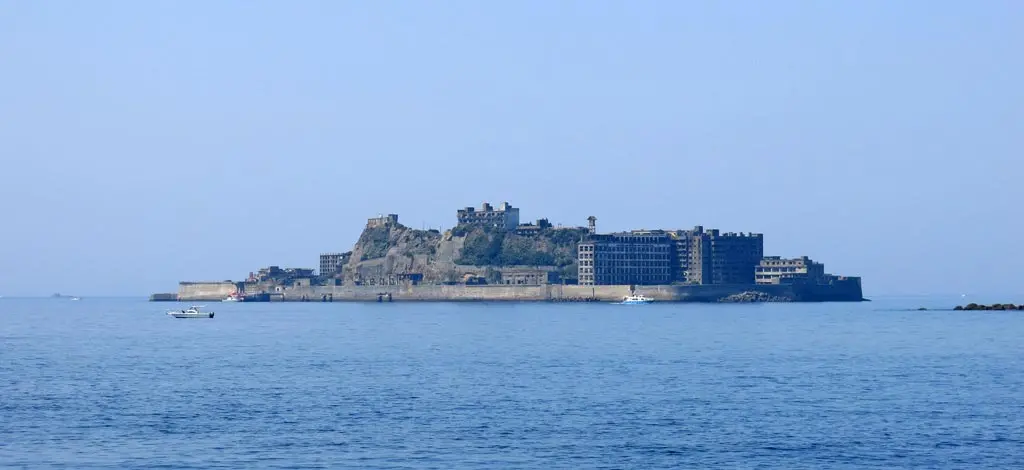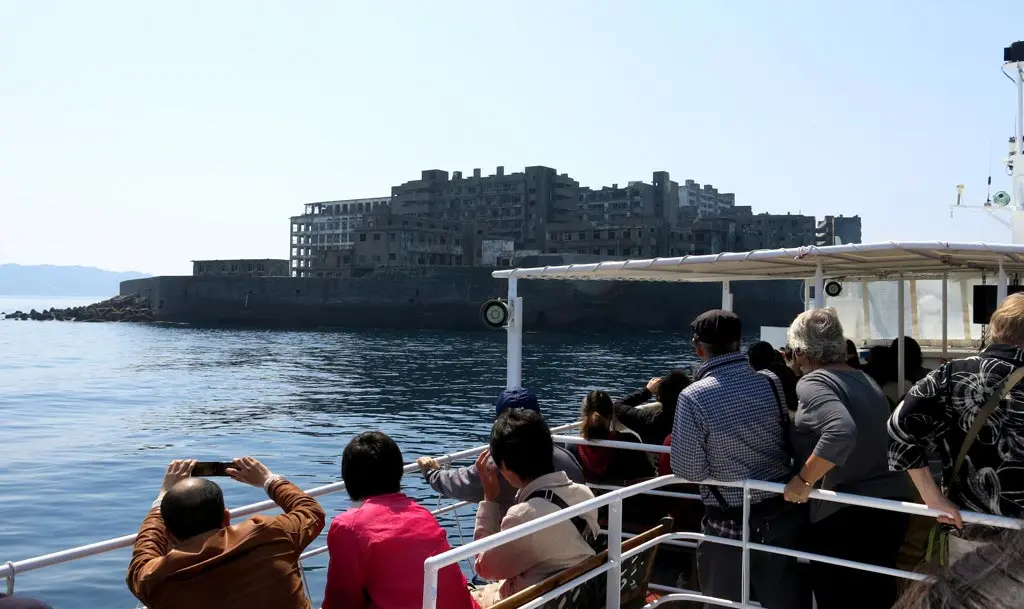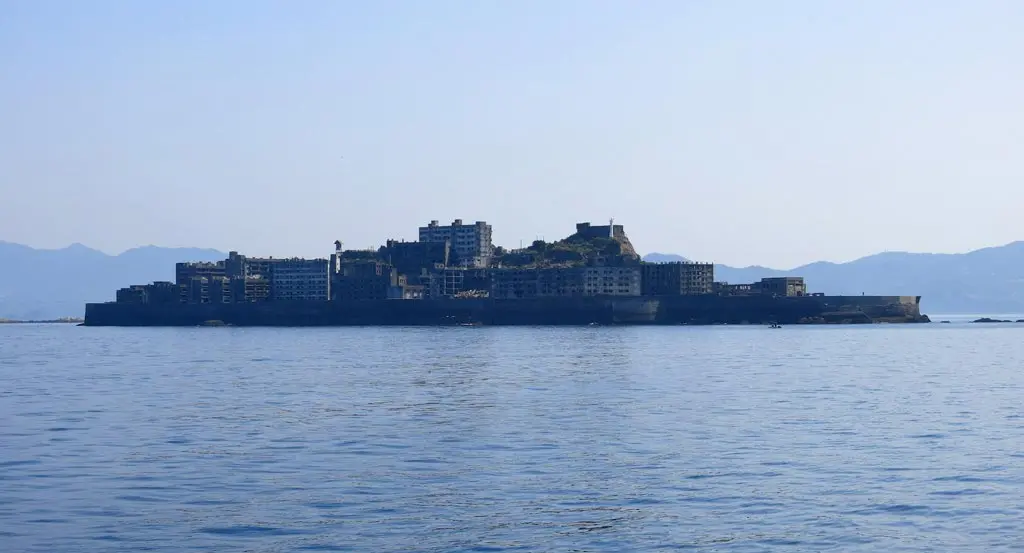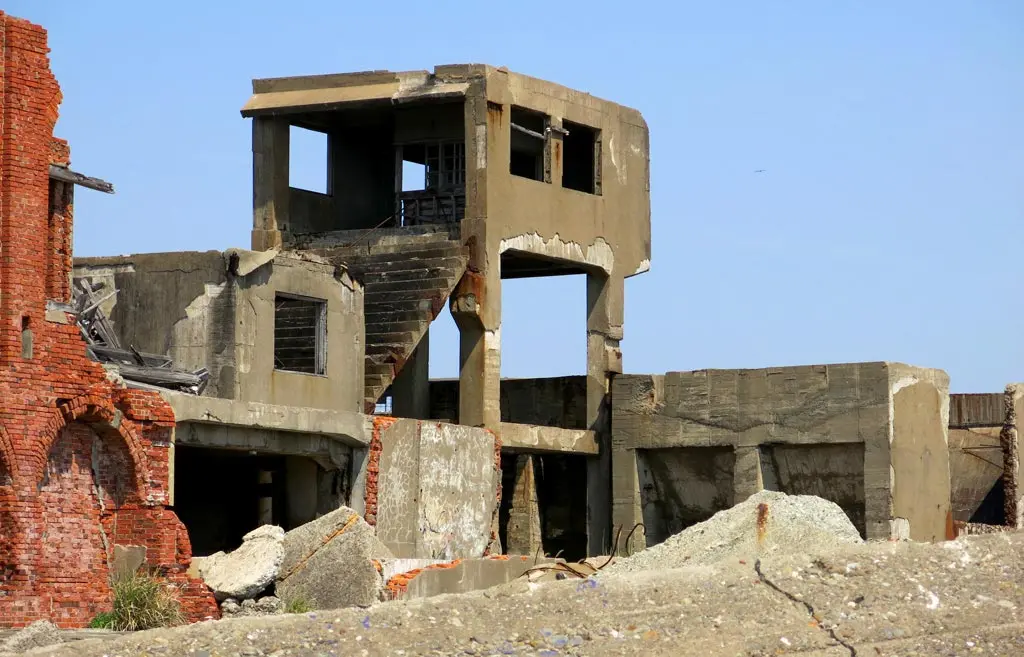At it's peak of operation, this island was the most densely population place on earth, and still holds that title today. This is Hashima, or, by its nickname, "Battleship Island". It exists in the Sea of Japan just 15km west of Nagasaki City.

Coal was first discover on the island in 1810, and a small mining operation existed. The first official mineshaft opened in 1887. Production on the island didn't really turn into a massive settlement until the Mitsubishi bought the island, and increased it's magnitude. At the height of its operation, the population of the island was around 5300 people.
After World War II, and the adoption of petroleum, people began to use coal less and less. So with the demand waning, the island became more and more obsolete. On January 15th, 1974, closed the last operating mineshaft. And on April 20th, the last residents of the Hashima left the island forever. The island remained abandoned and unkept after that.
In 2002, Mistubishi relinquished ownership to Takashima-machi. And with a government restructuring in 2005, it now became part of Nagasaki City. After years of work, planning, and construction, tourism finally opened on the island almost 35 years to the day it closed down, April 22nd, 2009.
May 2010 was the last time I had visited Nagasaki. I went with Dave, and we met Ikuko who was very insistent that we visit this place. So, we did. ^_^ Unfortunately, the weather was not very good, and I wasn't in a good position to take many good photos. Here are the photos I was able to take: May 19th, 2010.
Up until Nagasaki's acquisition of the island, no attempt to upkeep or preserve the island had taken place. It suffered from weather, rotting, and general decay for over 30 straight years. There is massive concern from the city about the safety of the island, especially inside the decaying building.
This is why it took 4 years, with delays, to open the island to regular tourism. And then, even on the island, tourists are closely watched, and the areas you can visit are very very minimal. On the island, the walkway is as far the edge of the island as possible. Far away from any of the residentially buildings, and any collateral damage if one of the buildings should collapse.
Nagasaki wants to preserve the buildings and other structures on the island, but the cost is too high for the city. Constant tourism brings in money to help that, but it's still not enough.
In Nagasaki, right now, there's a massive campaign to have Hashima, and several other parts of Nagasaki, listed as a UNESCO World Heritage site. If successful, they should receive funding to further preserve the island, and make it even more accessible to tourists.
So, last Friday, March 28th, was the second time I have been to the island. The last time was May 10th, 2010, and the procedure was completely identical as it is today. You buy passage on a boat from Nagasaki Harbor. You take a cruise to the island. The boat circles around the island for a little bit. Then you land on the island, and a tour guide shows off the parts of the island you can see, and talks about the history. You walk around on the very cornered off part of the island away from the decaying buildings. And then you go back to the harbor.
Unlike the first time I visited, the weather was absolutely perfect. Clear skies, clear water. Absolutely beautiful.
Below is the front of the island which served as the actual mining facility. This is where everyone worked, and where ships would load coal, and drop off supplies for the island.
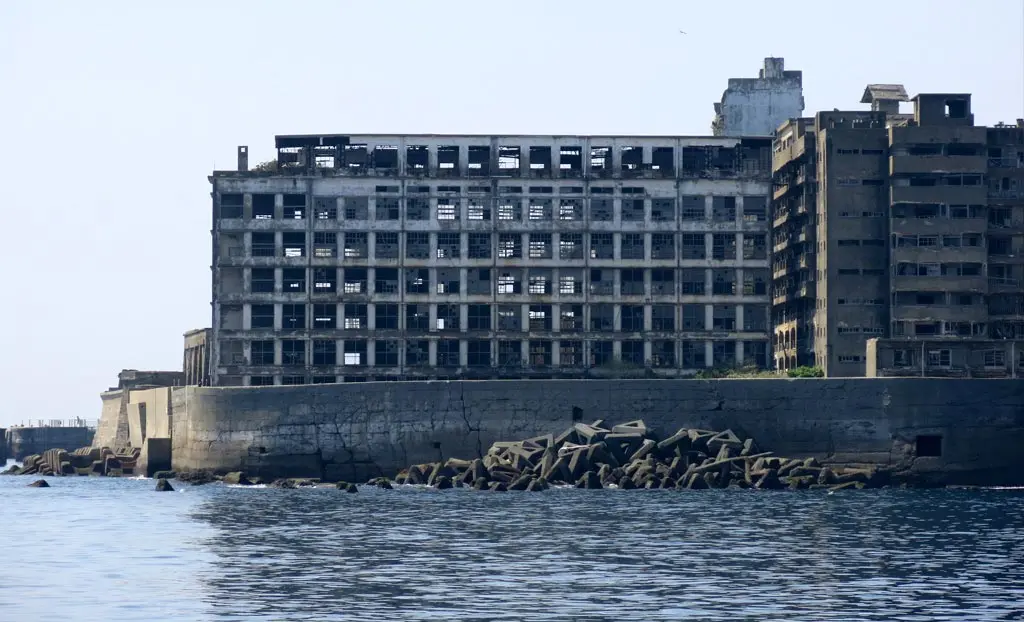
Above is Hashima JHS and Hashima ES. The first four floors of the building served as the elementary school, and the top 3 were the Junior high school. While a school existed on the island before, the finished construction of this building is 1958 allowed the residents to consolidate all the schooling into one single building. Though, the Kindergarden was still in a different connected building. In 1970, the built a gymnasium, but it has since collapsed.
Right next to the school, and housing the kindergarden on the roof, was the most populous residential building on the island, No. 65. It served as home for 317 families.
Below is the back of the island off limits to tourists. It contains all the residential buildings and is the most dangerous part of the surface of the island.


Above is building No. 51, which served mainly as residential. It housed 40 families.
Again, on the island, tourism is only permitted near the mining facility and far away from any of the more interesting buildings. But you can still see some neat ruins.
In the second photo below, the building overseeing most of the island was where management lived on the island. It was the only building on the island that had private baths.


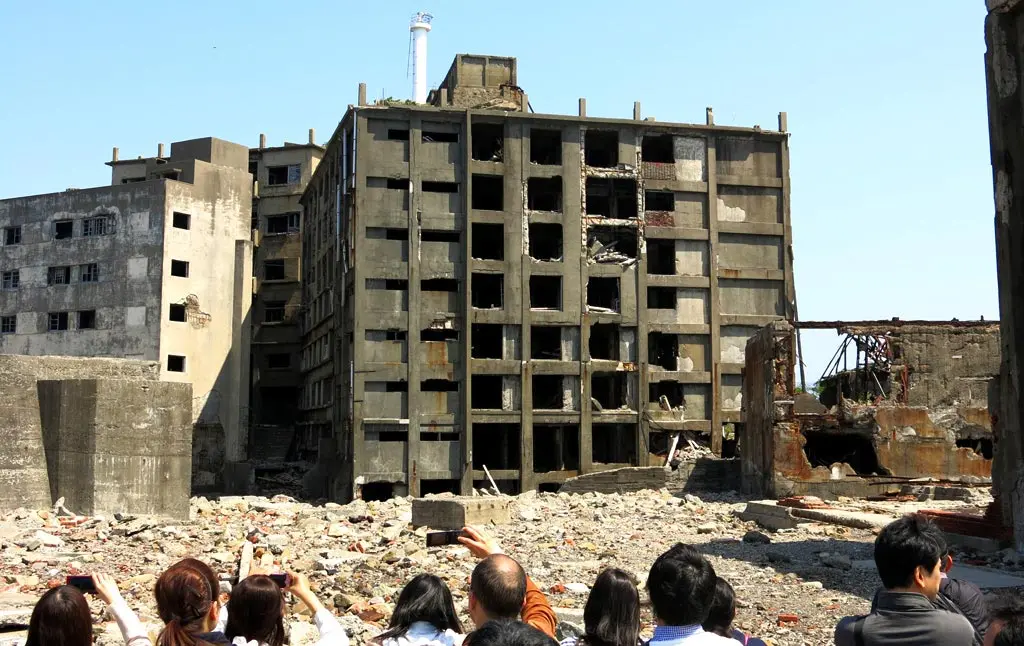
And above is the closest you actually get to a residential building. This was building No. 30 and was the second most populous building on the island for 140 families.
Here's the same place from 4 years ago.

Anyway, it's a neat little escapade to take if you find yourself in Nagasaki, especially on a clear beautiful day. Tourism is rather lucrative though, so you do need a reservation in advance. It might be a little expensive, though, at about 4000円, but I think it's interesting, and worth it.
And with Nagasaki campaign for UNESCO, the tourism on the island could completely change in the future. ^_^


